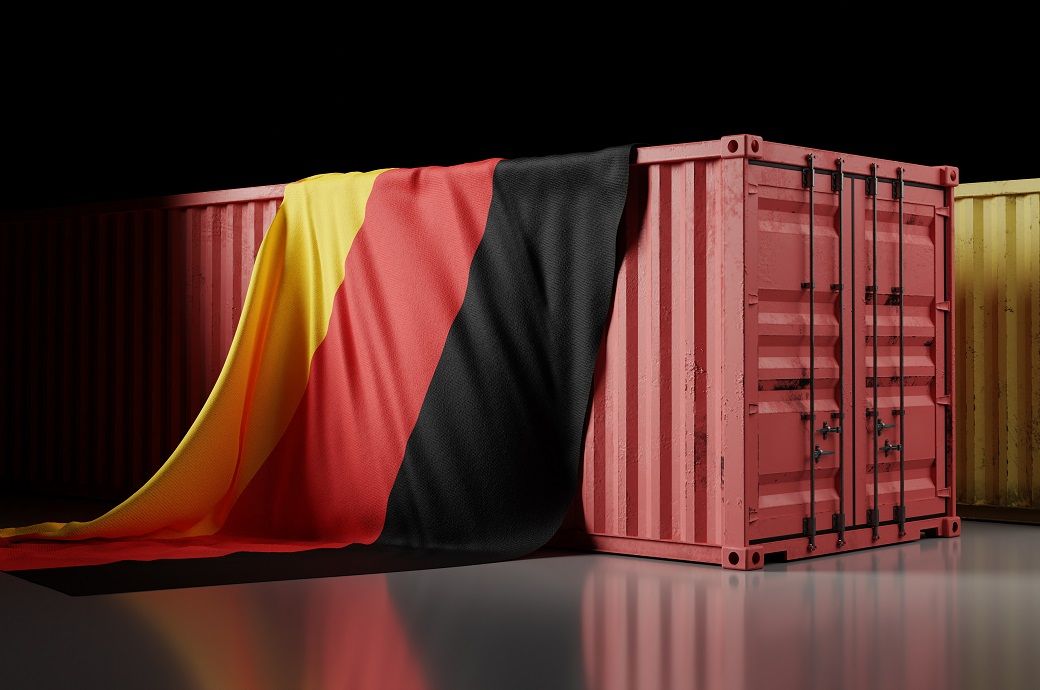Germany was the leader in trade openness in textiles and clothing among major textile-importing countries in 2022, with a rate of 2.03 per cent for that year. France and the United Kingdom followed as prominent markets in terms of openness, with percentages of 1.63 per cent and 1.05 per cent, respectively.
In 2022, Germany led in trade openness in textiles and clothing with 2.03 per cent, followed by France and the UK.
All countries, including Canada and Australia, experienced fluctuations in trade openness rates from 2018 to 2022, particularly during the COVID-19 pandemic in 2020.
Despite these fluctuations, Germany's rate increased to 2.03 per cent by 2022.
Germany's openness was 1.86 per cent in 2018. It decreased to 1.85 per cent in 2019 and 1.74 per cent in 2020. Subsequently, it improved to 1.80 per cent in 2021 and 2.03 per cent in 2022. Overall trade openness in textiles and clothing for France was noted at 1.47 per cent in 2018, which steadied at the same level in 2019, then reduced to 1.34 per cent in 2020. However, it improved to 1.39 per cent in 2021 and 1.63 per cent in 2022, according to
Fibre2Fashion's market insight tool TexPro.
In 2022, Germany led in trade openness in textiles and clothing with 2.03 per cent, followed by France and the UK.
All countries, including Canada and Australia, experienced fluctuations in trade openness rates from 2018 to 2022, particularly during the COVID-19 pandemic in 2020.
Despite these fluctuations, Germany's rate increased to 2.03 per cent by 2022.
The UK's openness reduced to 1.05 per cent in 2022 from 1.32 per cent in 2018. It was recorded at 1.29 per cent in 2019, 1.23 per cent in 2020, and 0.94 per cent in 2021. Canada was at the bottom with 0.74 per cent in 2022. Its trade openness was 0.75 per cent in 2018, which improved to 0.77 per cent in 2019, but decreased to 0.69 per cent in 2020 and further to 0.66 per cent in 2021, before upgrading again to 0.74 per cent in 2022. Australia's openness improved to 0.87 per cent in 2022 from 0.79 per cent in 2018. It decreased to 0.77 per cent in 2019 and 0.68 per cent in 2020 but improved to 0.78 per cent in 2021 and then to 0.87 per cent in 2022 according to
TexPro.
In 2022, Germany led in trade openness in textiles and clothing with 2.03 per cent, followed by France and the UK.
All countries, including Canada and Australia, experienced fluctuations in trade openness rates from 2018 to 2022, particularly during the COVID-19 pandemic in 2020.
Despite these fluctuations, Germany's rate increased to 2.03 per cent by 2022.
It is important to note that trade openness decreased in all these countries in 2020 when COVID-19 spread globally. Fluctuations were observed in the percentages of trade openness in the years before and after for most countries.
In 2022, Germany led in trade openness in textiles and clothing with 2.03 per cent, followed by France and the UK.
All countries, including Canada and Australia, experienced fluctuations in trade openness rates from 2018 to 2022, particularly during the COVID-19 pandemic in 2020.
Despite these fluctuations, Germany's rate increased to 2.03 per cent by 2022.
Trade openness is an economic concept referring to the degree to which a country allows or encourages trade with other countries. It is often measured as the ratio of a country's total trade (the sum of its exports and imports) to its gross domestic product (GDP). This ratio gives an indication of the relative significance of international trade to the country's economy.
In 2022, Germany led in trade openness in textiles and clothing with 2.03 per cent, followed by France and the UK.
All countries, including Canada and Australia, experienced fluctuations in trade openness rates from 2018 to 2022, particularly during the COVID-19 pandemic in 2020.
Despite these fluctuations, Germany's rate increased to 2.03 per cent by 2022.
Fibre2Fashion News Desk (KUL)
